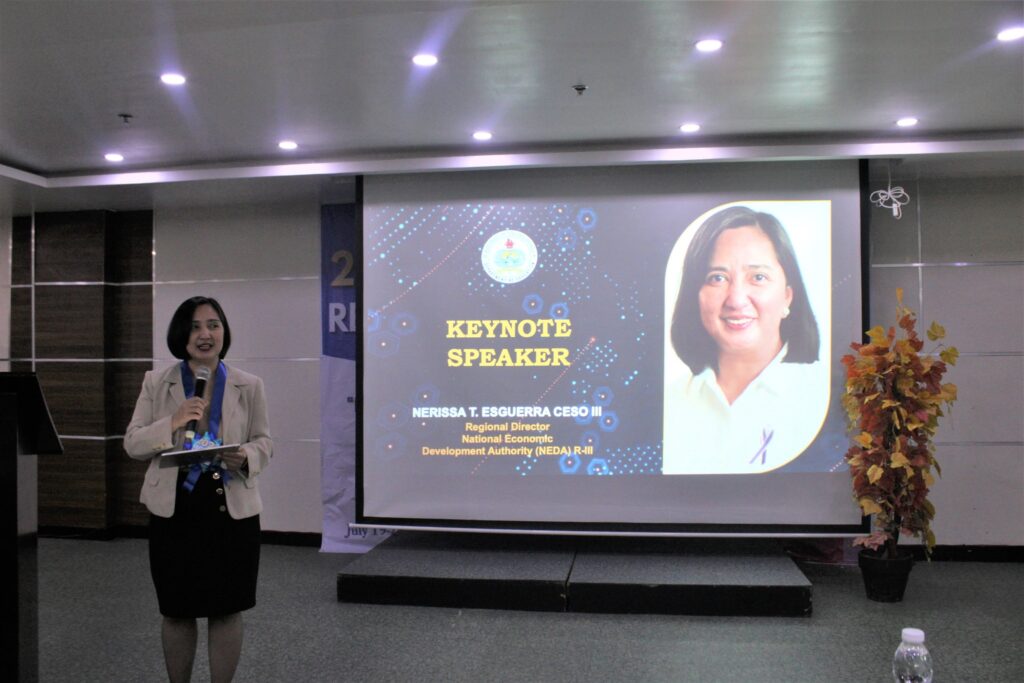CITY OF SAN FERNANDO, Pampanga (PIA) — Central Luzon continues to showcase its economic resilience as the region’s Gross Regional Domestic Product (GRDP) grew by 6.1 percent or P2.3 trillion in 2023.
Although lower than the 8.1 percent growth rate in 2022, National Economic and Development Authority (NEDA) Regional Director Nerrisa Esguerra said the latest data shows that the region has recovered from the severe impact of the COVID-19 pandemic, with all provinces and highly urbanized cities posting positive growth rates ranging from 4.6 to 7.5 percent.
“Angeles City and Olongapo City registered the fastest growth, both at 7.5 percent. Bulacan and Pampanga, which are nearest to the National Capital Region, maintained their position as the region’s primary economic drivers, collectively accounting for approximately 50 percent of the region’s total output in 2023,” she said.
The services sector remains to be the primary driver of Central Luzon’s economic growth, contributing about 47 percent, surpassing pre-pandemic levels since 2022.
“The services sector continues to demonstrate a robust performance. Therefore, it will be crucial to sustain its growth and ensure that services are linked and add value to the outputs of the industry and agriculture sectors,” Esguerra said.
Among the initiatives to sustain growth in the services sector is to increase access of micro, small, and medium enterprises to available digital technology so they can adopt e-commerce, make their operations more efficient, and expand their market.
NEDA said industries must also partner with the academe and other institutions to upskill the workforce through learning programs that will match existing and anticipated job opportunities in the region.

Meanwhile, the industry sector also contributed 42.3 percent to the region’s GRDP.
“The region continues to be a favored investment destination in the country due to our strategic location, and we shall continue leveraging on this aspect,” Esguerra said.
She added that the ban on Philippine Offshore Gaming Operations should be taken as an opportunity to redirect investments to more productive, job-generating, and income-generating sectors.
Another driver of the economy is the agriculture sector which contributed 10.8 percent to the GRDP.
While the region’s growth in this sector has not surpassed pre-pandemic levels, it has posted a slight uptick from 2.1 percent in 2022 to 2.6 percent in 2023.
Esguerra said that although frequent weather and climate-related disasters and calamities have partly held back the region’s agricultural outputs, the sector has a lot of potential that needs to be unleashed.
With this, she called on stakeholders to exert greater efforts to implement the strategies contained in the Central Luzon Regional Development Plan (CLRDP) to improve the agriculture sector’s competitiveness.
These include using research and development, cutting-edge technology, upgraded post-production facilities, value-adding investments, and improved packaging and marketing.
“We need to modernize Central Luzon’s agriculture sector…We need to draw in the younger generation of scientists, business managers, marketing professionals, investors, and entrepreneurs. A modern agriculture sector that is seamlessly linked to industry and services sectors will be crucial in attaining food security, generating quality jobs, and increasing incomes,” Esguerra stressed.
She also cited the crucial role of private sector-led economic growth in complementing the government efforts to achieve sustainable and lasting economic development.
“Let us strive to innovate to significantly lower the transaction costs borne by those doing business and availing of services in our localities without sacrificing the quality of regulation. Let us be mindful of things that investors, locators, and citizens will be looking for. Let us ramp up the provision of resilient public infrastructure, transport, water, energy, and significantly improve the efficiency of service delivery, including solid waste management. These can be more efficiently done in partnership with the private sector,” she said.
NEDA will continue working towards ensuring that the Philippine Development Plan and CLRDP are translated into investments, programs and projects that promote inclusive growth while maintaining fiscal discipline. (CLJD/MJSC, PIA Region 3-Pampanga)





